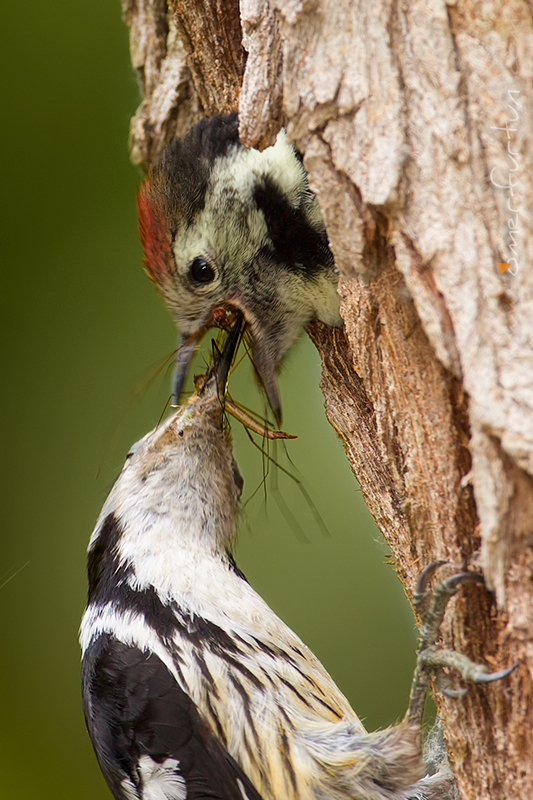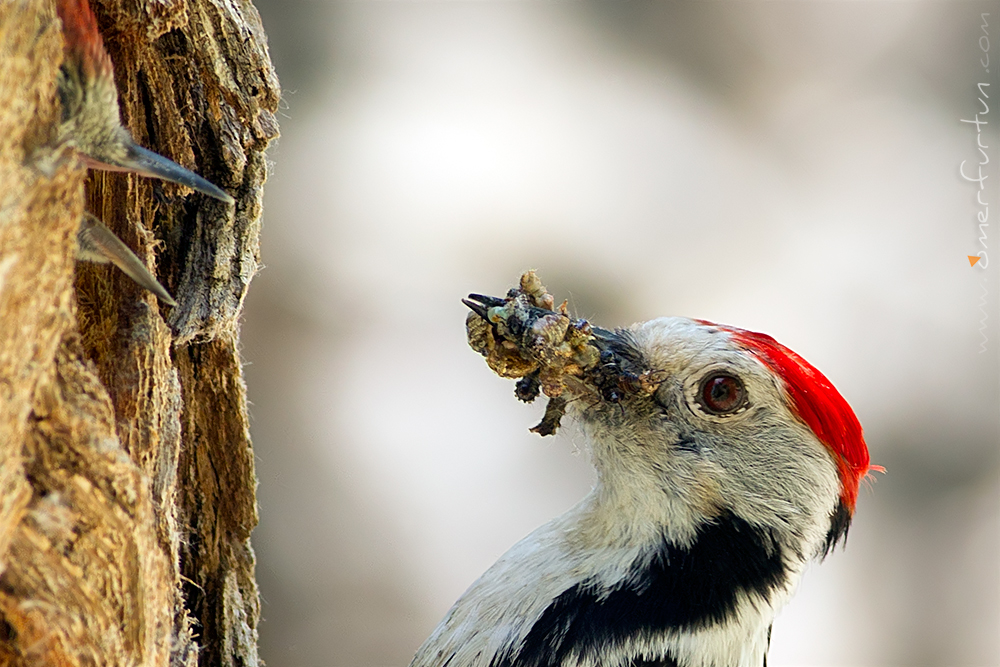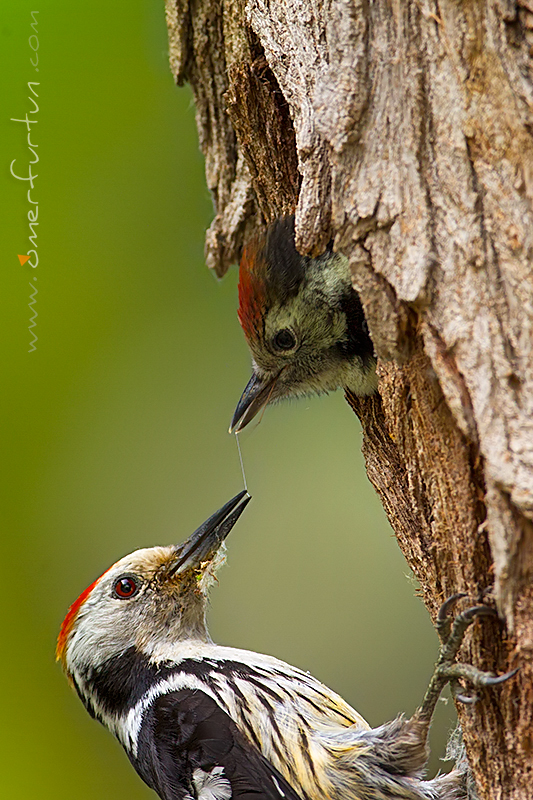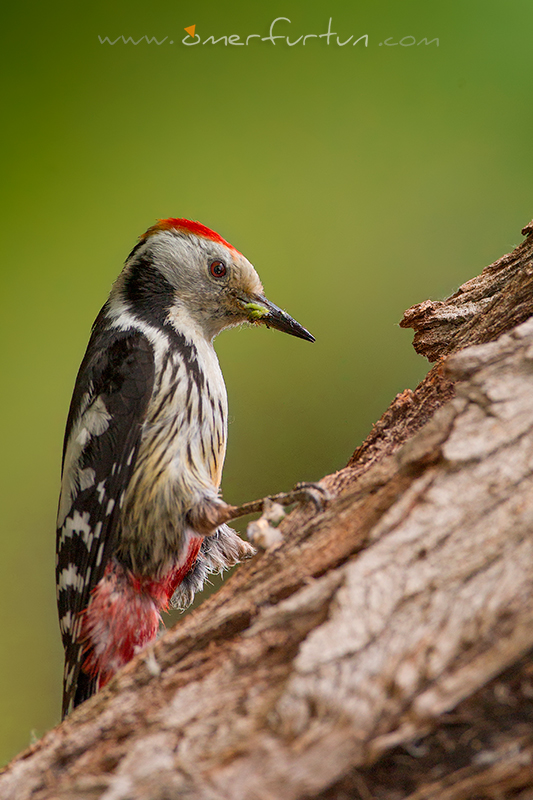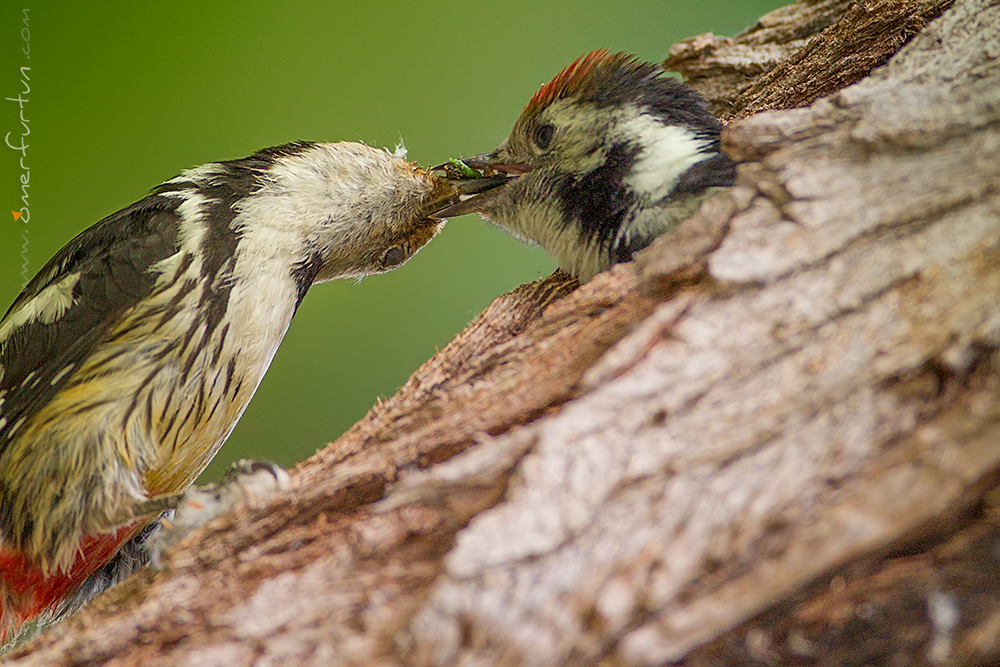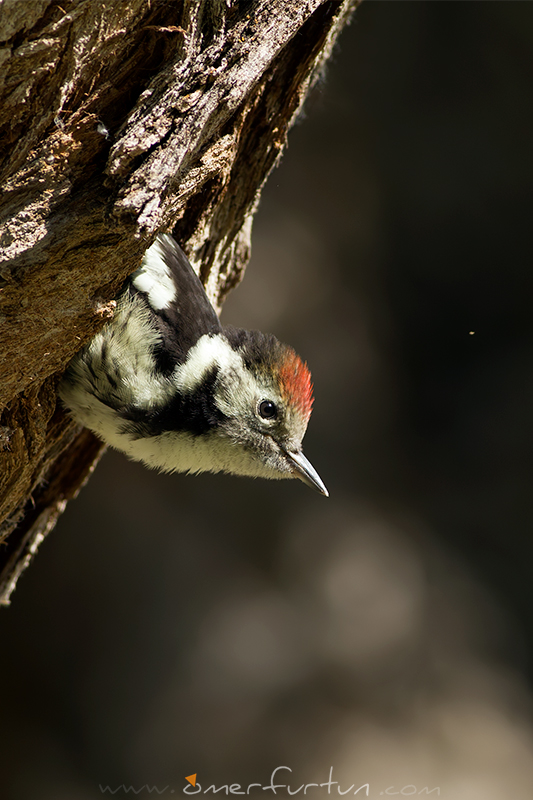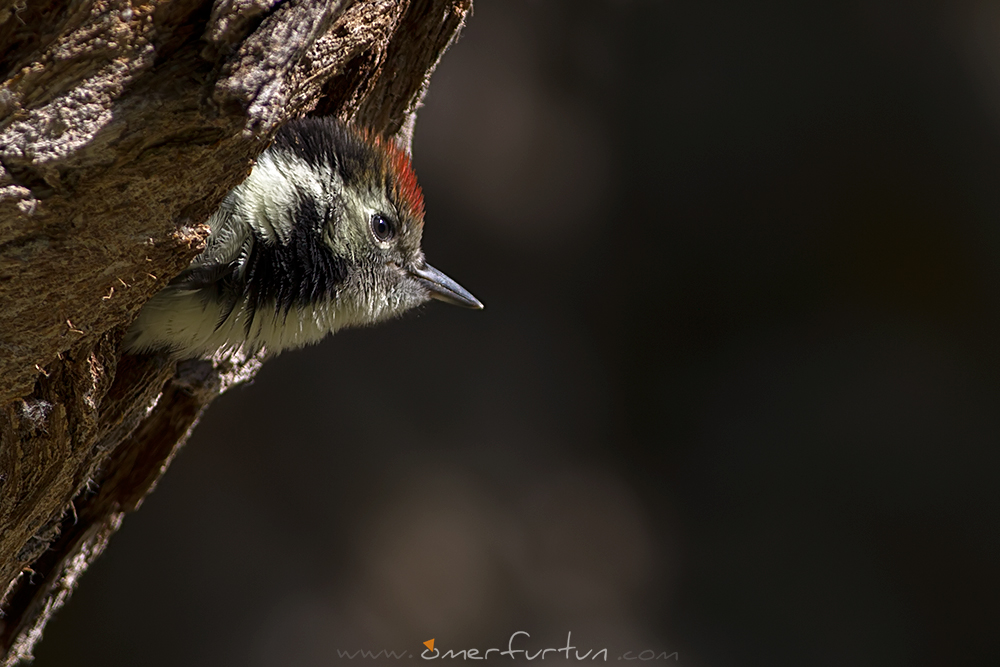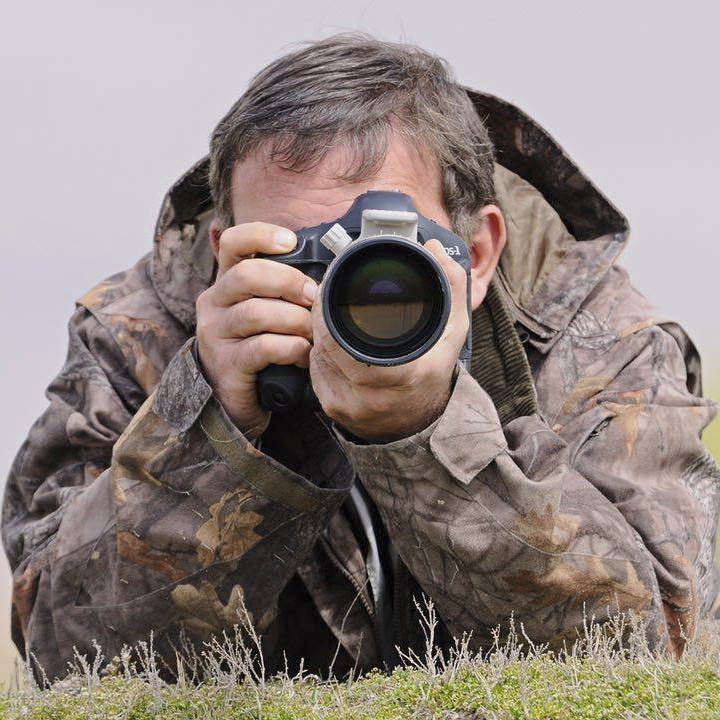Bang Your Head Against the Wall!
Imagine slamming your head into a tree trunk at 24 kilometers per hour. No, no, not unprotected—let’s be fair and give you a helmet. Now do it with the helmet. 100 times a minute, about 10,000 times a day.
Would you even have a brain left?
Woodpeckers do this daily for about 10 years straight—just to dig out bugs and larvae, make drumming sounds, and carve out nesting holes.
Their secret? A flexible spine, powerful neck muscles, a shock-absorbing spongy structure between their skull and beak, a muscle that pulls the brain backward with each impact, and—believe it or not—a ridiculously long tongue that wraps around their skull like a built-in seatbelt.
So, this is the story of a bird that has spent its entire life hammering its head into wood—and two photographers who, in comparison, have only had a few encounters with flying soccer balls and the occasional run-in with a low ceiling.
My photographer friend Serkan Mutan came across this Middle Spotted Woodpecker family in İnözü Valley. For days, he insisted, “Come on, man, the chick is growing up; it’ll fly soon!” Work, life… Finally, six days later, I manage to accept his invitation. He sets out from Ankara, I leave from Istanbul, both of us driving through the night. By morning, we meet near the tree where the woodpecker family lives and slip into camouflage mode.
It’s a great spot for photography, but we’re exhausted from the road and starving. “These guys will still be here in the afternoon; we’ll continue later,” we say and head to one of the breakfast places in İnözü Valley.
We settle into a serender (a traditional raised wooden platform) and indulge in a feast—fried eggs with sucuk, honey, butter—the works. Once full, we stretch out on the seating cushions of the serender and drift into sleep.
Since it’s elevated, we’re completely out of sight when lying down. To the folks sitting at the regular tables below, it just looks like the serender itself is snoring. And not just any snoring—full-on stereo mode.
By 3:00 PM… it’s finally time to return to the woodpeckers.
From this point on, I’ll let Serkan Mutan take over with his own summary of the events. Quoting him directly:
While I was in the middle of these shoots, my photographer friend, dear Furtun, called me from Istanbul. I guess he could tell from my voice that something was off. When he asked where I was, I just said, "Oh, nowhere special, just shooting woodpeckers." But he wasn’t fooled—he simply said, "I'm coming," and hung up.
Of course, it took him about five or six days to actually get here, what with work and all. In the meantime, I made sure to tease him by sending the same message every day: "I've grown so much. Today, I'm leaving the nest."
Anyway, he finally arrived. His plan was to stay in Beypazarı for a few days and observe the nest. But before we even got there, he bombarded me with questions: "Where should I stay? How’s the guesthouse? What about the judges' lodge?" After exhausting me with logistics, we finally made it to the nesting site.
In the morning, the mother woodpecker visited the nest twice. Everything was going perfectly for Furtun—he was thrilled. Feeling optimistic about the afternoon session, we took a break for lunch.
After eating and resting, we returned to the nest, set up our camouflage, and waited in silence. We could hear the chick inside. For two straight hours, from separate camouflaged spots, we communicated using nothing but exaggerated facial expressions and eye movements—only eye movements, mind you. It went something like this:
"The mother’s coming… She's moving right… now left… perching on the upper branch… she's got food… behind you… no, right side… left again… she’s up… and… gone."
I swear, that little woodpecker must have been laughing at us from above.
By the time we realized it, the chick had already left the nest. It was perched high on a tree branch, overlooking the valley, while we spent a good two or three hours waiting for it in an empty nest.
What did we gain from all this?
Well, at least my photographer brother and I have developed a foolproof, wordless communication system now…
So, it turns out that a bird who has spent its whole life banging its head against a tree can drive two photographers—whose heads have only encountered the occasional soccer ball or low ceiling—completely insane.
Did I bang my head against the wall after traveling 350 kilometers, only to have my multi-day photography plan cut short because the model quit on us?
Well, looking at it from another angle, I was lucky to have made it just in time to witness, even briefly, another marvel of nature. Even if the photos weren’t quite up to my standards, at least I got something. Watching the mother woodpecker’s success and her chick’s first flight into the wild was still a privilege.
This experience also taught me something valuable: apparently, my lifetime tally of accidental headbutts and misfired soccer balls has left more damage than I realized—enough for a tiny bird to successfully mock me.
On the bright side, we now have yet another adventure to tell with Serkan Mutan. And I’m glad that his brain has been spared the torment of thinking, "Man, imagine what Ömer could’ve captured in just two or three days!"
Mutan and I have had plenty of days when we returned from the field empty-handed, but we’ve never come back without a good laugh.
For Serkan Mutan’s full Middle Spotted Woodpecker story and photos, check out:
https://www.serkanmutan.net/2013/09/ortanca-agackakan.html
They said it well:
"The brain is a wonderful organ; it starts working the moment you get up in the morning and does not stop until you get into the office!" – Robert Frost
"Chance favors the prepared mind." – Louis Pasteur
"Attention is the greatest child of the mind." – Victor Hugo
"I used to think that my brain was the most important organ in my body. Then I thought, wait a minute, who's telling me that?" – Emo Phillips



